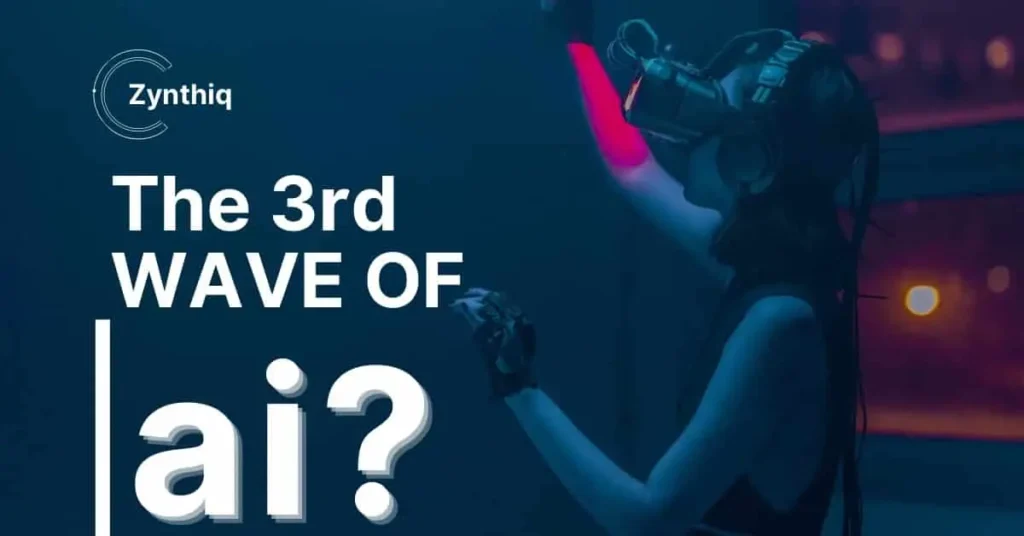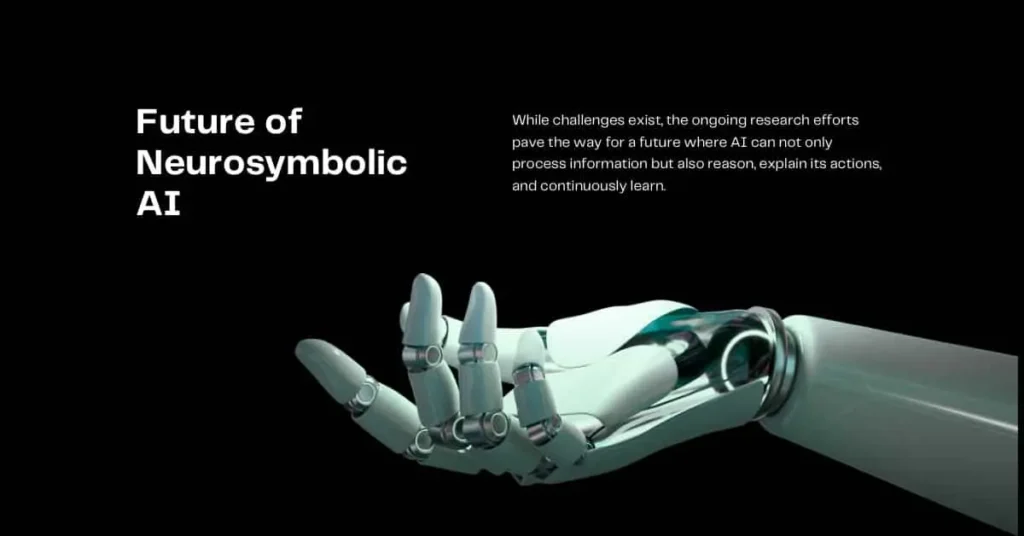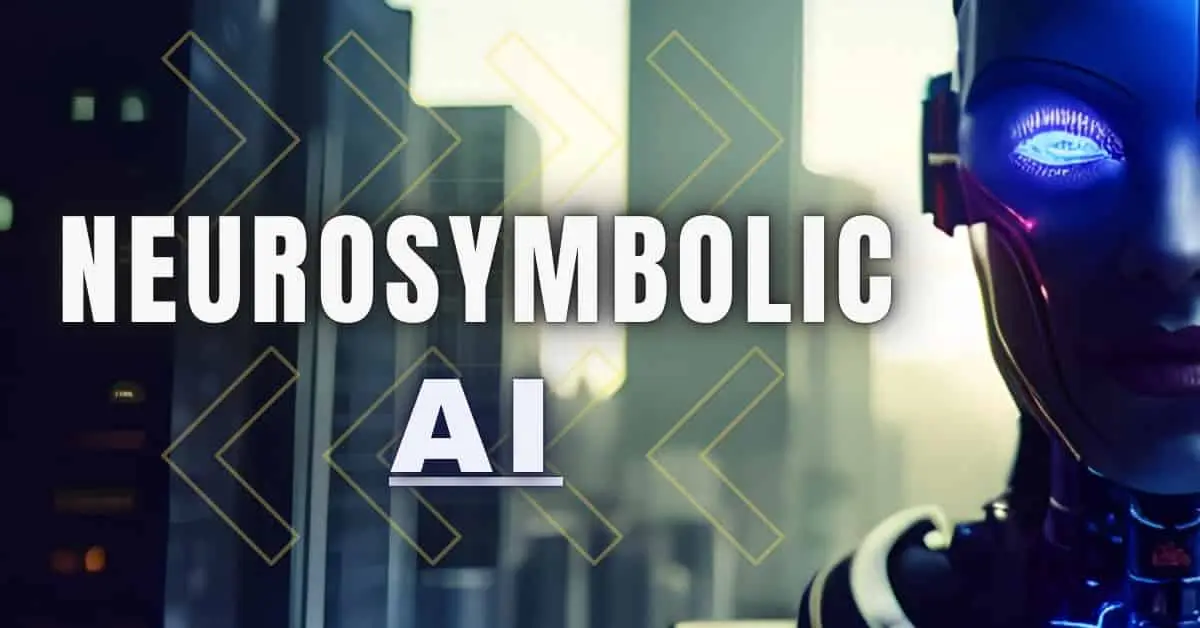Imagine having a super-powered AI assistant that answers your questions flawlessly, but you’re left completely in the dark about how it reached those answers. Machines excel at crunching data and making predictions, but explaining their thought process remains a mystery.
Enter neurosymbolic AI, a revolutionary approach that bridges the gap between traditional, rule-based AI and powerful machine learning. It’s like merging a seasoned chef’s expertise with a curious apprentice’s creativity.
This fusion aims to create a more powerful and transparent form of Artificial Intelligence (AI) that can not only learn but also reason and explain its decisions.
Key-Points
what is Neurosymbolic AI?
Think of it like this:
- Symbolic AI (rule-based): This is like a skilled chef who meticulously follows recipes, ensuring consistent results. It excels at logical reasoning but can struggle to adapt to new situations.
- Machine Learning (data-driven): Think of this as a curious apprentice who constantly experiments with new ingredients and techniques, learning from experience. While adept at recognizing patterns, machine learning cannot often explain its reasoning.
This collaboration unlocks exciting possibilities:
- Reasoning beyond data: AI can move beyond just pattern recognition and grasp the “why” behind the data, leading to more insightful results.
- Explainable decisions: No more black boxes! AI can explain its reasoning, fostering trust and transparency.
- Learning from less: Symbolic AI can guide machine learning, enabling effective learning even with limited datasets.
Real-world example
For example, traditional AI might analyze symptoms and suggest diagnoses based solely on statistical data. In contrast, neurosymbolic AI can provide a more comprehensive diagnosis by also considering the patient’s medical history, risk factors, and expert medical knowledge.
A review in the ACM Digital Library highlights a significant increase in research publications on Neurosymbolic AI, reflecting its growing importance.
A Survey on Neural-symbolic Learning Systems
neurosymbolic aI: the 3rd wave

AI has progressed through distinct eras:
- First Wave (Symbolic AI): Logic-driven reasoning systems.
- Second Wave (Machine Learning): Data-powered learning and adaptation.
Neurosymbolic AI represents the dawn of a new era in artificial intelligence, addressing the limitations of both;
- Symbolic AI: Excels in reasoning but lacks flexibility
- Machine Learning: Adept at recognizing patterns but struggles with explainability.
Neurosymbolic AI bridges the gap by combining:
- Symbolic foundation: A framework of rules and knowledge.
- Machine learning capabilities: Analyzes data to refine understanding and adapt.
This synergy unlocks:
- Reasoning beyond data: Understanding the “why” behind information.
- Explainable decisions: AI can explain its thought process.
- Continuous learning: Ability to learn and adapt to new data.
Imagine an autonomous vehicle:
- Traditional AI: Might struggle due to reliance on pre-defined rules.
- Machine learning: Might identify obstacles but lack an explanation for the best course of action.
Benefits of Neurosymbolic AI:
- Leverages knowledge of traffic laws and safety protocols.
- Analyze sensor data to understand the situation.
- Employs machine learning to adapt and make informed decisions.
This paves the way for safer and more reliable autonomous vehicles.
neurosymbolic aI applications
Let’s delve into some real-world applications:
Healthcare:
- Enhanced Diagnosis: Neurosymbolic AI can analyze medical data (symptoms, medical history) alongside vast medical knowledge, potentially leading to more accurate diagnoses.
- Personalized Medicine: AI can create tailored treatment plans by considering individual patient profiles and medical histories, providing a more customized healthcare experience.
Finance:
- Fraud Detection: Neurosymbolic AI can evaluate complex financial transactions, taking into account both patterns and rules, leading to better fraud prevention.
- Risk Management: By combining historical data with real-time market analysis, AI can offer a more comprehensive understanding of financial risks, enabling better risk management strategies.
Robotics:
- Intelligent Manipulation: It enables machines to better understand their surroundings and handle objects more accurately, enhancing autonomous operations.”
- Autonomous Navigation: Neurosymbolic AI can empower robots to navigate complex environments by combining real-time sensor data with knowledge of their surroundings, leading to safer and more efficient autonomous operations.
The United States is heavily investing in research and development for Neurosymbolic AI.
- DARPA (Defense Advanced Research Projects Agency): Funds research projects exploring the potential of Neurosymbolic AI for various applications, including [Computing / AI / Cyber].
- Leading universities: Institutions like MIT, Stanford, and Carnegie Mellon are actively researching and developing Neurosymbolic AI algorithms.
Challenges
Integration Tango:
Using symbolic and connectionist approaches effectively is akin to teaching two languages simultaneously. Challenges arise in seamlessly combining rule-based reasoning with data-driven learning.
Scalability Dilemma:
Current methods can become computationally expensive when dealing with massive datasets. Imagine trying to teach a million words to two students at once!
Future Directions
Hybrid Architecture Design:
Researchers are working on new frameworks to address the computational challenges of large datasets and the integration of these approaches.
Explainable AI Integration:
Neurosymbolic AI’s inherent ability to reason can be harnessed to create more transparent and explainable AI systems, fostering trust in their decision-making processes.

Despite the obstacles, current research is leading to AI systems capable of not only processing information but also reasoning, explaining their actions, and continuously learning, which will result in more transparent and reliable decision-making processes.
Conclusion
Neurosymbolic AI presents an important new approach to artificial intelligence. still, with great eventuality comes great responsibility. As we claw deeper into this technology, careful consideration must be given to implicit challenges like ethical counteraccusations and icing explainability in AI decision-making processes.
Check out more related information below;
FAQS
1. Is AI eventually closing in on mortal intelligence?
Not relatively. While AI has made significant progress, achieving true mortal-position intelligence( including feelings, common sense, and real-world understanding) remains a distant thing.
2. Do AI robots have passions?
No. Current AI lacks the capacity for feelings or knowledge. Their responses are grounded on assaying data and following programmed instructions.
3. Is Neuro-Emblematic AI a result of resolvable AI( XAI)?
Yes, Neuro-emblematic AI holds an immense pledge for XAI. Its capability to combine emblematic logic with machine literacy allows for a clearer understanding of how AI arrives at its opinions.
4. What’s neuro-emblematic AI? How is it the AI of the future?
Neuro-emblematic AI merges emblematic AI(rule-grounded) with machine literacy(data-driven). This combined approach offers AI the eventuality to reason, learn, and explain its conduct, paving the way for a future where AI can attack complex tasks taking both sense and adaption.
5. How differently will neuro-emblematic AI affect our diurnal lives?
Implicit operations include Healthcare Improved medical opinion and substantiated treatment plans. Robotics Robots can navigate complex surroundings and perform intricate tasks. Finance More robust fraud discovery and smarter fiscal threat operation.
6. What’s the newest form of AI?
While setting a single “ newest ” form is challenging due to nonstop advancements, Neuro-emblematic AI represents a significant development with its unique approach to combining emblematic and machine literacy ways.
7. Is Neuro-Emblematic AI the coming big thing in AI?
Neuro-emblematic AI has the implicit to be a game-changer. Its capability to reason and explain its opinions could lead to significant improvements in colorful fields.
8. Why isn’t further exploration being done in neuro-emblematic AI?
Exploration is laboriously ongoing, but challenges like integrating different AI approaches and icing scalability live.
